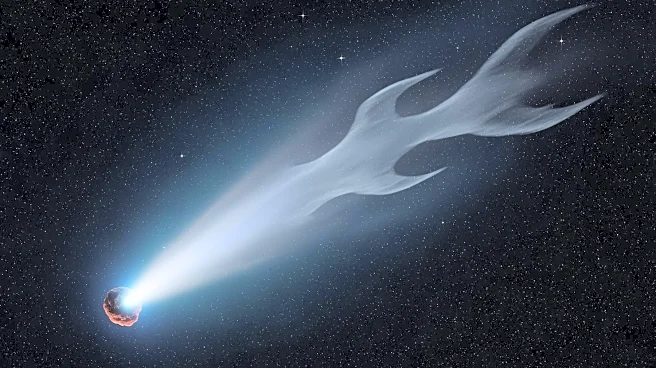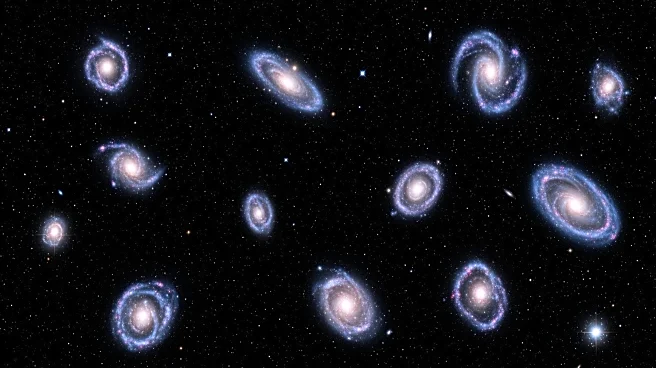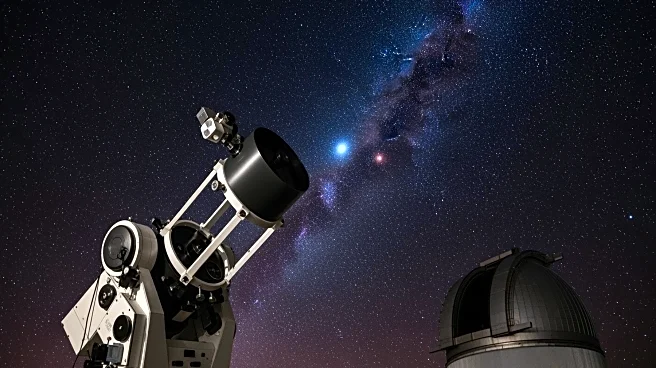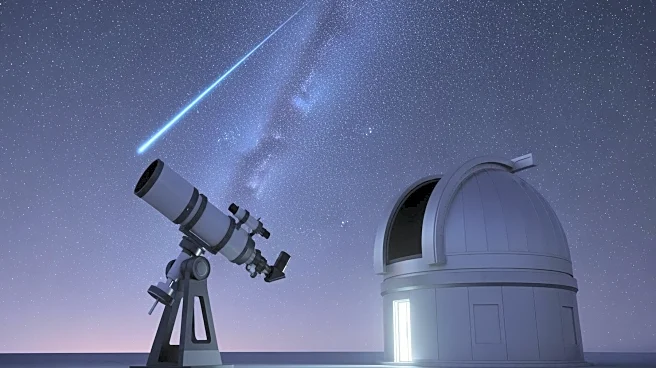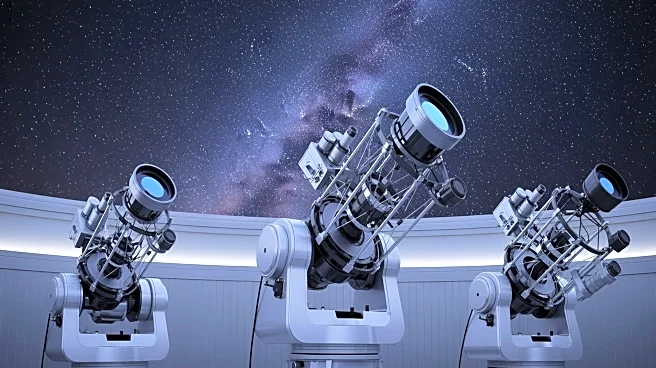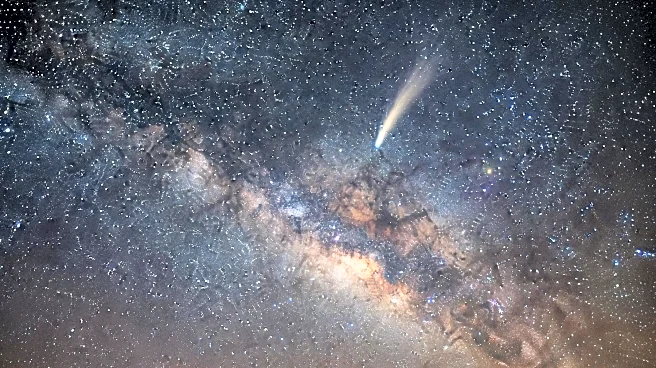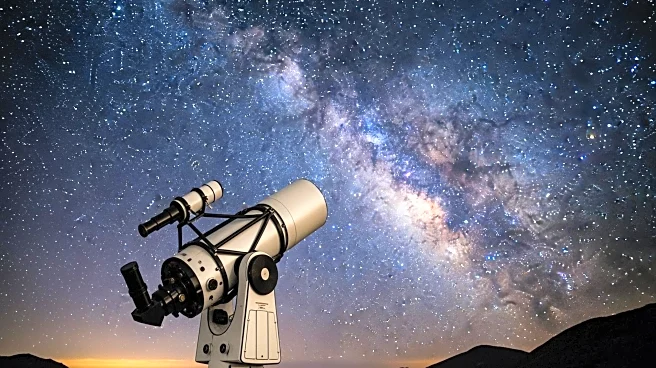What's Happening?
The Vera C. Rubin Observatory, located in the Chilean Andes, is on the brink of launching a significant astronomical project known as the Legacy Survey of Space and Time (LSST). This decade-long mission aims to scan the southern sky every three nights,
tracking the brightness, position, and movement of billions of celestial objects. The observatory is equipped with the Simonyi Survey Telescope, featuring an 8.4-meter mirror and the largest digital camera ever created for astronomy, a 3.2-gigapixel LSST Camera. The observatory will detect up to 10 million changing objects each night, including newly discovered asteroids and supernovas. A specialized software system, referred to as the 'data butler,' will manage the vast influx of data, organizing and archiving more than 20 terabytes per night. This system is designed to allow astronomers to focus on scientific analysis rather than data management.
Why It's Important?
The Vera C. Rubin Observatory's mission is crucial for advancing our understanding of the universe. By providing the most comprehensive real-time record of the changing sky, the observatory will significantly contribute to the study of dark matter, a mysterious substance that constitutes the majority of the universe's matter. The observatory is named after Vera C. Rubin, an astrophysicist whose work confirmed the existence of dark matter. The data collected will help scientists map billions of galaxies over time, offering insights into how dark matter influences the universe's structure and behavior. This project not only honors Rubin's legacy but also propels forward the scientific exploration of cosmic phenomena.
What's Next?
As the observatory begins its operations, astronomers and researchers worldwide will have access to an unprecedented dataset, enabling new discoveries and insights into the universe's mysteries. The observatory's findings are expected to influence various fields of astrophysics, potentially leading to breakthroughs in understanding dark matter and the evolution of galaxies. The scientific community anticipates that the data will also inspire new theories and models about the universe's fundamental nature.
Beyond the Headlines
The Vera C. Rubin Observatory represents a significant leap in astronomical research, emphasizing the importance of international collaboration in scientific endeavors. The project's success could inspire similar initiatives, fostering a global effort to explore and understand the universe. Additionally, the observatory's technological advancements, such as the 'data butler,' may set new standards for data management in large-scale scientific projects, influencing future research methodologies across various disciplines.


